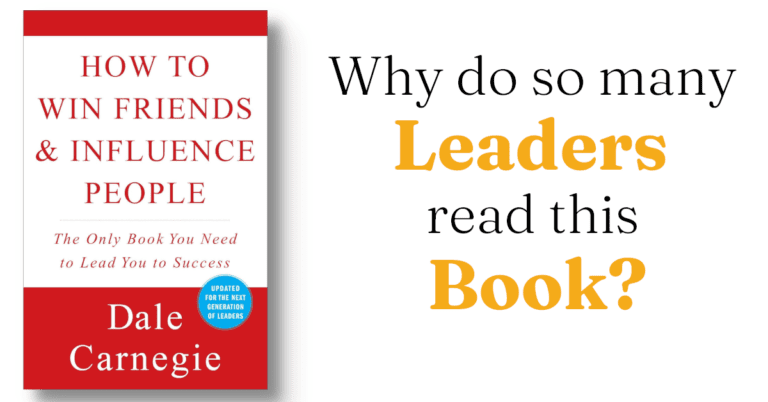Table of Contents
I just finished reading The Leadership Gap by Lolly Daskal. I hadn’t set out to read it, but it popped up in the ‘we think you’ll like this’ section in my Libby app. And, while I read it on a whim, I was not disappointed. The book’s insights into leadership archetypes and their corresponding gaps are engaging and highly relevant to a burgeoning leader.
Lolly Daskal’s website describes her as one of the world’s most sought-after executive leadership coaches. I’ll take her word for it: I’d never heard of her. But, I must admit I’m a tiny fish in a massive pond. So that doesn’t mean much. Either way, I’m glad I learned about her book.
Leadership archetypes and leadership gaps for every occasion
Lolly structures the book around seven fundamental archetypes and their corresponding ‘gaps’—the negative form of the archetypes. The archetypes are the Rebel, the Explorer, the Truth Teller, the Hero, the Inventor, the Navigator and the Knight. The gaps, likewise, are the Imposter, the Exploiter, the Deceiver, the Bystander, the Destroyer, the Fixer, and the Mercenary. This practical approach allows readers to identify their leadership style and understand how to bridge the gaps.
Readers are encouraged to read through each archetype to see what best matches their greatest strength. Lolly asserts that the one that resonates the most with you is your dominant archetype. At the same time, she cautions the reader to identify their leadership gaps and correct them.
The confident Rebel vs. The self-doubting Imposter

Lolly’s first archetype is the Rebel. Rebels aren’t content with the status quo and look to push boundaries and inspire their teams. Since challenging the status quo often requires treading into unknown or uncomfortable territory and may even require stepping on some toes, Rebels naturally have high confidence.
If “it’s the way we’ve always done it” makes your skin crawl, you might be a Rebel.
The Rebel’s opposing leadership gap, the Imposter, presents two main flaws they must address.
For Rebels, the first step in addressing their leadership gap, the Imposter, is to recognize the constant threat of self-doubt. This self-doubt can undermine their confidence and diminish their ability to inspire and lead. To combat this, Lolly suggests that Rebels take regular inventory of their skills and accomplishments. This exercise can boost their confidence and remind them of their strengths and contributions.
Second, Rebels can forget to be considerate of those around them. The owners of those stepped-on toes may feel resentful or hurt by the Rebels’ boundary-pushing. Lolly asserts that Rebels must be aware of others and balance their rebellious natures by being open to respectful collaboration.
The intuitive Explorer vs. The manipulative Exploiter

Lolly describes Explorers as curious and open-minded. Novel ideas, new perspectives and unique opportunities drive them. This archetype may sound similar to the Rebel, but where the Rebel seeks to challenge the old ways, Explorers seek to find new ways. Unlike the Rebel, Explorers are driven more by their intuition. Their gut feeling drives them past the next hill, metaphorically speaking, looking for the untouched pasture of new ideas just beyond.
The Explorer’s leadership gap is the Exploiter. Lolly describes the Exploiter as an Explorer who uses their power for evil. Intuition and the wealth of knowledge that comes with their constant exploration of new ideas puts Explorers in the position to be quite adept at manipulating others. There are numerous reasons for manipulation, but it often happens when others get in the way of their exploration.
Likewise, Explorers must recognize that their constant search for novelty can hurt their focus and follow-through. Explorers must remember that their continuous quest for new information can hurt their commitments and obligations.
The sincere Truth-Teller vs. The suspicious Deceiver

While you might assume a “Truth-Teller” always tells the truth, it’s more nuanced than that. As Lolly describes it, being a Truth-Teller is about being honest, but it’s also about being transparent and authentic. When engaging with a Truth-Teller, what you see is what you get. There are no hidden agendas or secret motives. They’re not playing 4D chess and playing staff against each other. They’re trying to be true to themselves and those around them.
It should come as no surprise, then, that the Truth-Teller’s leadership gap is the Deceiver. As the antithesis to the Truth-Teller, the Deceiver is neither true to themselves nor the people in their lives. They may not be as manipulative as an Exploiter, but they are still hard to trust. Deceivers may use privileged information to their advantage or withhold information to consolidate and protect their power. They will also bend the truth to fit their goals, often at the expense of others.
At the same time, Truth-Tellers must also watch out for the damage unfiltered honesty can cause to personal relationships. Viewing the truth as the only thing that matters can make a Truth-Teller appear judgmental or aggressive. Truth-tellers must employ caution, tact, and empathy in their dealings with others to avoid damaging relationships and, ironically, to maintain people’s trust in them.
The courageous Hero vs. The timid Bystander

The Hero is someone you want in your corner in a crisis. They’re decisive and action-oriented. And, above all else, they dare to act even in the face of risks and criticism. Heroes are willing to do what’s needed and put it all on the line to do so. Heroes are driven by their goals and prepared to make sacrifices, whether working longer hours or taking on more responsibilities.
Because of this, Heroes need to be cautious of burnout or becoming overextended. They may also be so focused on short-term goals that they lose sight of the bigger picture, detrimenting their teams and organizations. Lolly suggests Heroes listen to their bodies to avoid burnout and listen to their people to ensure they don’t lose sight of the bigger picture.
The Hero’s leadership gap is the Bystander. We’ve experienced a Bystander before, or we’ve been one ourselves. A Bystander sees something wrong and then doesn’t do or say anything to correct it. Maybe out of fear of the repercussions or the social exclusion, but whatever the reason, Bystanders fail to act where a Hero would. I need help with this gap. I’m naturally non-confrontational, and speaking up doesn’t come naturally to me. I regularly have to remind and motivate myself to stand up against the wrongs I see. It’s a work in progress, but I still have room for improvement.
The honourable Inventor vs. The unprincipled Destroyer

Inventors are visionaries. They love to brainstorm and problem-solve. The more complicated the problem, the more their creativity spills forth. Inventors are very future-focused and driven by a desire to improve the world around them. The Navigator’s drive comes from their unwavering integrity. Inventors have guiding principles that inform how they develop solutions and make decisions. Without this integrity, an Inventor’s creativity would be directionless and random. With integrity, they can find novel solutions to the complex problems that challenge their organizations and societies.
Inventors need to be cautious, though. As natural dreamers, Inventors can innovate beyond what is feasible or practical. Their lofty visions can lead to failure when their ideas don’t materialize. Inventors can also struggle with follow-through, which can lead to missed opportunities. It is one thing to envision a grand solution to a complex problem. Still, implementing that solution is entirely different, and Inventors need to recognize this difference.
The leadership gap of the Inventor is the Destroyer. Inventors abound with integrity; Destroyers do not. Destroyers may still share in the boundless creativity of the Inventor. Still, their morally dubious nature allows for far different results. It’s the difference between a safe and fun zoo filled with prehistoric animals and Jurassic Park. Speaking of Jurassic Park, I love Ian Malcom’s quote, “Your scientists were so preoccupied with whether or not they could, they didn’t stop to think if they should.” That is a good description of the Destroyer: an unethical person focused on the ends, uninterested in whether those ends justify the means.
The reliable Navigator vs. The egotistical Fixer

Lolly’s Navigator archetype stands on two pillars. First, Navigators are data-driven and analytical. They are commensurate planners and navigate complicated challenges by divining detailed paths to safe harbours. At the same time, Navigators rely heavily on trust. The Navigator may sound similar to the Truth-Teller. Still, a Navigator is focused less on honesty or candour and more on the mutual trust developed in their relationships. Navigators are highly reliable and will go out of their way to maintain the trust they’ve built with those around them.
This can lead to rigidity and risk aversion in Navigators. They thrive on reliability, so it can be quite uncomfortable for them to leave their comfort zones. They may also be resistant to change and, since they’re quite data-driven and analytical, may be able to present well-reasoned arguments against particular innovations. Navigators must be aware of their discomfort and work to be more open to new ideas and change where possible.
The opposing force for the Navigator is the Fixer. It may sound like their downside is they go around repairing things, but that’s unfortunately not the case. A better, albeit longer, name might be as “stick-in-the-mud.” Because trust is essential for Navigators, when someone breaks their trust or at least gives the impression it is damaged, they feel a greater sense of betrayal. Their feelings can lead the Fixer to disengage or even seek revenge on the person or team they feel betrayed by. Lolly suggests that Fixers get “fixed” on the betrayal to the detriment of everything else.
The devoted Knight vs. The self-serving Mercenary

The seventh and final archetype Lolly describes in the book is the Knight. Knights value loyalty above all else. They excel at building belonging with their teams. They often go the extra mile to provide appreciation, support, and unity to their colleagues. Knights are dedicated to their people and may even put the well-being of their people ahead of their own.
A Knight’s dedication to their people can have its downsides, though, as Knights may avoid addressing problems in their teams to maintain the peace and unity they’ve built. To prevent this, a Knight needs to balance their dedication to the organization’s mission and the people they work with. They also need to be able to step back and get a better view of the whole situation. Taking moments to engage with problems objectively will make it easier for Knights to make the tough calls when they come up.
The leadership gap for the Knight is the Mercenary. Being loyal to your team will help them gain loyalty in return. According to Lolly, mercenaries often take advantage of that loyalty for personal gain. Mercenaries feign commitment to gain benefits and don’t share the deep connection with their people that the Knight does. More importantly, when the going gets tough, a Mercenary will quickly throw people under the bus to save their skin. Their “commitment” is fleeting, and their team won’t take long to figure that out. Besides, most people can distinguish between genuine and sham loyalty. Humans are social creatures, and we have thousands of years of evolution on our side when it comes to differentiating.
What to do next

After illustrating the seven archetypes and providing real-world examples of them and their respective leadership gaps, Lolly sets a path for the leaders reading her book. And a lot of it points to being self-aware. Leaders need to take an inventory of their leadership style and see where it aligns with the archetypes. I say the “archetypes” because your strengths may match multiple archetypes.
I wish Lolly had raised this point earlier in the book. I spent most of the book like it was a BuzzFeed quiz, trying to figure out which archetype I was instead of seeing where I lined up and where I needed to improve. After she raised this, I went back and looked at the archetypes and gaps to see where my strengths lay and where my gaps were.
Conquer your leadership gaps
With your strengths and gaps identified, or at least better understood, Lolly then tells the reader they need to work to close their leadership gaps and turn them into strengths. For Lolly, this is a constant process that requires regular introspection on the part of the leader. Leadership, after all, is a journey and not a destination. A significant amount of ongoing dedication to personal and professional development is required.
Nothing new, but still worth it
The Leadership Gap offers nothing novel. Lolly may have found a new way to dress up some basic leadership concepts with her archetypes, but she hardly invented the underlying concepts.
Humans have valued confidence, intuition, candour, courage, integrity, trust, and loyalty in leaders for almost as long as people have been leading other people. So, while Lolly didn’t invent any of these concepts, she did find an interesting way to couch them in perhaps more accessible terms.
The book’s strength is more on the real-world examples from her own experiences, with a few historical illustrations sprinkled in. These do an excellent job of showing what her archetypes and gaps look like when the rubber hits the road.
It may not be the best book on leadership ever written, but it’s nowhere near the worst. Lolly Daskal’s The Leadership Gap would be a solid place to start if you’re beginning your leadership journey.


